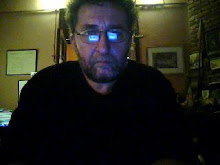
The Times They Are A-Changing'
The artistic scene in Buenos Aires has been growing increasingly during the last few years. Slowly but a sustained rhythm the city of Tango is returning to its cultural glory. It was during the 60s and 70s when BA's cultural and artistic scene was the avant-garde gate of Latin America.
It was a world in revolt.
Everywhere there were new and impressive movements. May of the '68 in France, Art & Culture in BA, Woodstock, New York and London were giving birth to musical, pictorial, cinematographic revolutionary movements that would set the tone for further developments and innovations. In Buenos Aires there were hundreds of cultural canters, underground theatres and pubs in which new and innovating bands were taking their first steps into stardom.
Countless galleries all throughout the city and nearby towns exhibited vanguard art locally produced.
What was the reason -if there is one- for all these cultural expressions?
I believe there is one, one main root from which branches develop and take their own direction. And this main root was the social situation worldwide.
The possibility of a better world, of a new social order in which suffer and pain were not the main features inspired millions of artists. It also provided them with a broad audience eager for new art and cultural expressions that portrayed their new reality.
But the world did not take the turn they were all expecting for it to take. The times that followed were hard and painful. Dreams were trashed by the worlds powerful. The following decades to this cultural impasse can be described as the entering into the system's main flow of mass production and consumption.
Publicity and advertising attracted those 60s and 70s young artists into a different way of art, much more bonded to the needs of money which they had left aside decades ago.
However hard and terrible those times were, this does not imply -in no way- that all alternative and avant-garde artistic movements disappeared. They diminished considerably in terms of quantity and quality, and were set aside.
Argentina, in particular, is a clear proof of this trace we've described above. The 80s and 90s were even harder than the late 70s. The cultural crisis was covered by an artificial economic wellbeing under Menem's double presidency. The one on one peso and dollar opened our borders and let most of the Argentinean middle class to explore the world, different cultures and raise their living standards. But at the same time, slowly in the bases of society a greater social, economical, political and cultural crisis was developing.
On December 2001 things got worse and worse, and the so-called wellbeing collapsed.
Times were hard.” The times where changing", (Bob Dylan)
People wanted a change. They wanted things to change. And society began to act again, not only in the political arena -the most well-known area in the world thanks to the worldwide coverage of the huge political demonstrations- but in the cultural field also.
Taking advantage of the new economical situation with a 3 dollars to 1 peso exchange rate all sort of Argentinean artists began to have a chance in showing what they did and living on that.
Many cultural events were to be found in several neighbourhoods. This new art & culture trend was not a second edition of what happened 30 years ago; it was completely new, expressing new and different art styles and techniques, mixing avant-garde art, music, design and food in a innovating atmosphere. This is how design fairs began and developed.
Even more, a group of art lovers got together and came up with a fantastic
Idea: Gallery nights. Every last Friday of every month downtown Retiro Buenos Aires turns into a huge showroom, as every art gallery, museum, art shop, in the area open their doors during the night for a superb art event in which new artists are presented, fine art is purchased and everybody has a great time.
No doubt about it! Buenos Aires is regaining it's cultural and aesthetic avant-garde place in the Latin American concert, not only shining with it's virtues and values but spreading the love for culture to neighbouring countries such as Uruguay and Punta del Estes’ summertime cultural activities.
Buenos Aires, Argentian.
For more information: Email: Bob Frassinetti.




